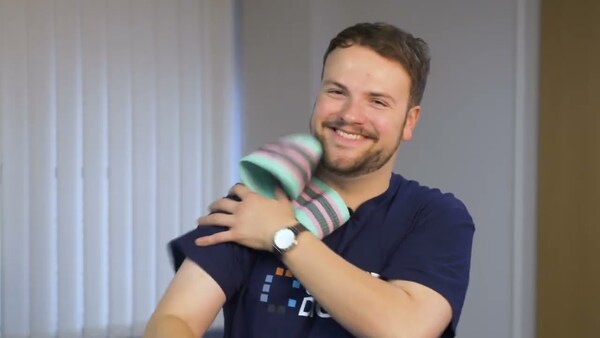Insights
INSIGHTS
All Topics
My Account
How to motivate casual charity supporters
14 Dec 2023by Ioan Marc Jones
We explore how to convert casual supporters and lapsed donors into committed advocates for your cause, with improved targeting, seamless user journeys, and the embrace of flexible fundraising
The cost-of-living crisis has impacted everyone across the charity sector and across the country. One of the main impacts of the cost-of-living crisis is a reduction of disposable income, as households spend increasing amounts on energy, food, water, and other everyday necessities. According to the Office for National Statistics, for example, 91% of British adults have experienced an increase in living costs compared to just a year ago. That means 91% of British adults have less money to donate to charity.
Indeed, the cost-of-living crisis has led to a cost-of-giving crisis. Charities are dealing with a reduction in funds and an increased demand. Charities need to adapt to meet the challenge and find new ways to raise funds and meet donors.
In this article, we explore an often-neglected opportunity for charities: the casual supporter. Casual supporters can include those who have supported a charity in the past, but have lapsed since. We explore how charities can find their casual supporters, how to engage them through seamless user journeys, and how to convert them with flexible fundraising options.
Charities can find out more about fundraising ideas from fundraising experts iRaiser here.
Finding and approaching casual supporters
They may not know what your charity aims to achieve and it’s unlikely that they’ve read your mission statement. They probably support your charity, in some sense, but have not specifically decided to donate or volunteer. They have an appetite to be involved, in some form, in some capacity.
These are your casual supporters, your imperfect supporters, the ones whom charities often neglect in pursuit of the ‘perfect donor’. Casual supporters provide a huge and often untapped opportunity for charities to raise funds. But first you need to locate your casual supporter and approach them.
It is likely that casual supporters exist in your physical or virtual community. So the first step might be community engagement, a vital step for all small- to medium-sized charities. You could perhaps host an event, complete with local vendors and local speakers, aiming to engage the casual supporter. You could use an event fundraising platform, such as iRaiser’s Community Fundraising Platform, to sell tickets, optimise fundraising pages, and collect donations through your events.
Casual supporters also exist among your current network, or just outside of that network. You can reach them through peer-to-peer fundraising efforts to engage casual supporters. You could create a social media group to find casual supporters, provide digital tool kits to help existing supporters promote your cause, use segmentation tools to tailor user journeys, or reach out to ambassadors.
Another option is to take advantage of pre-existing data. Sift through your CRM data and locate opportunities for reaching out to casual supporters: people who have shown interest in your cause but do not presently donate. Maybe they signed up to a past event. Maybe they opted in to your newsletter, or even commented on articles, or signed up to your website. If they’ve given appropriate consent, consider sending them a personalised email appealing for donations, advertising the importance of your cause and showing them that each donation has a demonstrable impact.
Creating quick and seamless supporter journeys
Your targeting will often lead the ‘casual supporter’ to your website. From there, you need to create a seamless user journey, allowing your new casual supporters to quickly access all the information they need and donate without any faff or fuss. Your website should be clean and simple, immediately projecting your cause and mission. It’s important, too, that your website is mobile-friendly. Consider, for example, that, according to Statista, 61% of all Google searched are performed using mobile devices.
Ease of navigation is particularly important when it comes to driving donations. If getting from A to B on your site contains unnecessary steps, your conversion rate suffers. Ensure the donation button is hyper-visible, placed in a prominent position that every user can find, no user can miss. And make sure, once they’ve clicked the donate button, that the form allows a donation in a matter of clicks.
Payment platforms, such as iRaiser’s advanced platform, can make the donation form seamless and provide other really useful functions. The platform allows you to create unlimited payment forms, accept any form of payment, synchronise and export data, and so much more. It’s simple and easy-to-navigate, which will allow you to quickly covert the casual supporters that you’ve engaged.
Remember that any complications, any unnecessary steps, are the quickest way to lose casual supporters. Take every possible action to ensure the donor journey is as seamless as possible.
Fundraising ideas from iRaiser
Embracing the virtues of flexible fundraising
Flexible fundraising is often talked about but seldom enacted. The benefits are huge. Flexible fundraising, among other things, increases overall donations, improves donor acquisition and retention, accommodates diverse donors, enhances engagement with younger donors, and so on.
The casual supporter, as mentioned above, is more likely to support a charity that makes donation quick and easier. And they are certainly more likely to support a charity that provides them myriad donation options, including the ability to increase or decrease donations depending on their current disposable income – something that massively boosts donor retention in times of economic hardship.
So charities should offer as many donor options as possible: one-off donations, regular donations, annual donations, in-kind donations (if applicable), payroll giving, matched giving, and so on. And they should offer flexibility within each option, allowing donors to change the amount and the regularity of their donation as and when they see fit. The offer of flexibility affords donors more agency and choice. And it benefits charities through additional funds and improved acquisition and long-term retention.
By following the above methods, by specifically finding and engaging casual supporters, by creating a website that easily converts casual supporters, and by offering various flexible donation options, charities can effectively meet the demands of the moment and boost their fundraising.
More on this topic
Recommended Products
21 Feb 2025by Ioan Marc Jones
How charities stopped centring service users
20 Feb 2025by Laura Stanley
The simplest way to collect contactless donationsSponsored Article
Our Events
Charity Digital Academy
Our courses aim, in just three hours, to enhance soft skills and hard skills, boost your knowledge of finance and artificial intelligence, and supercharge your digital capabilities. Check out some of the incredible options by clicking here.






















